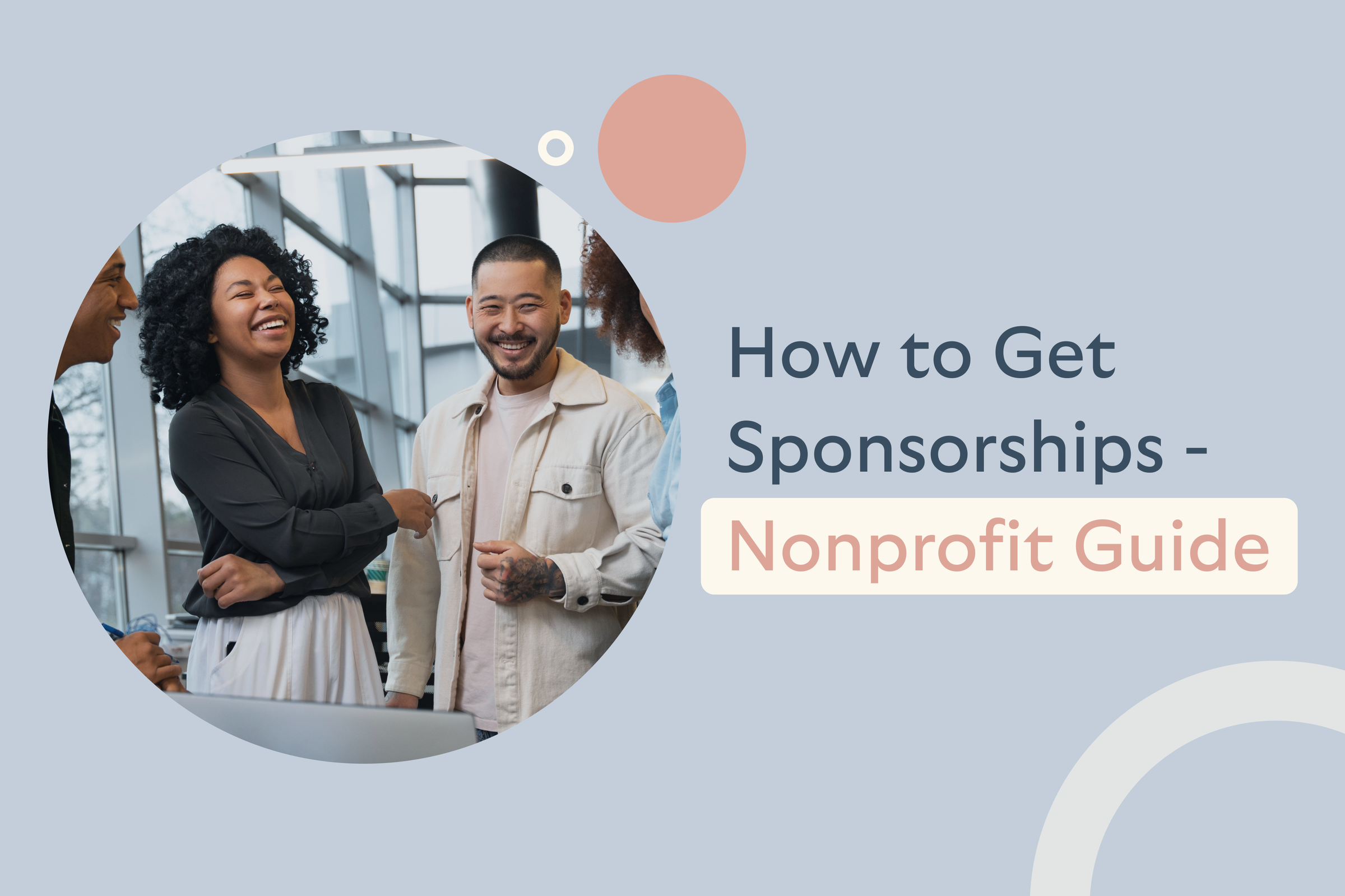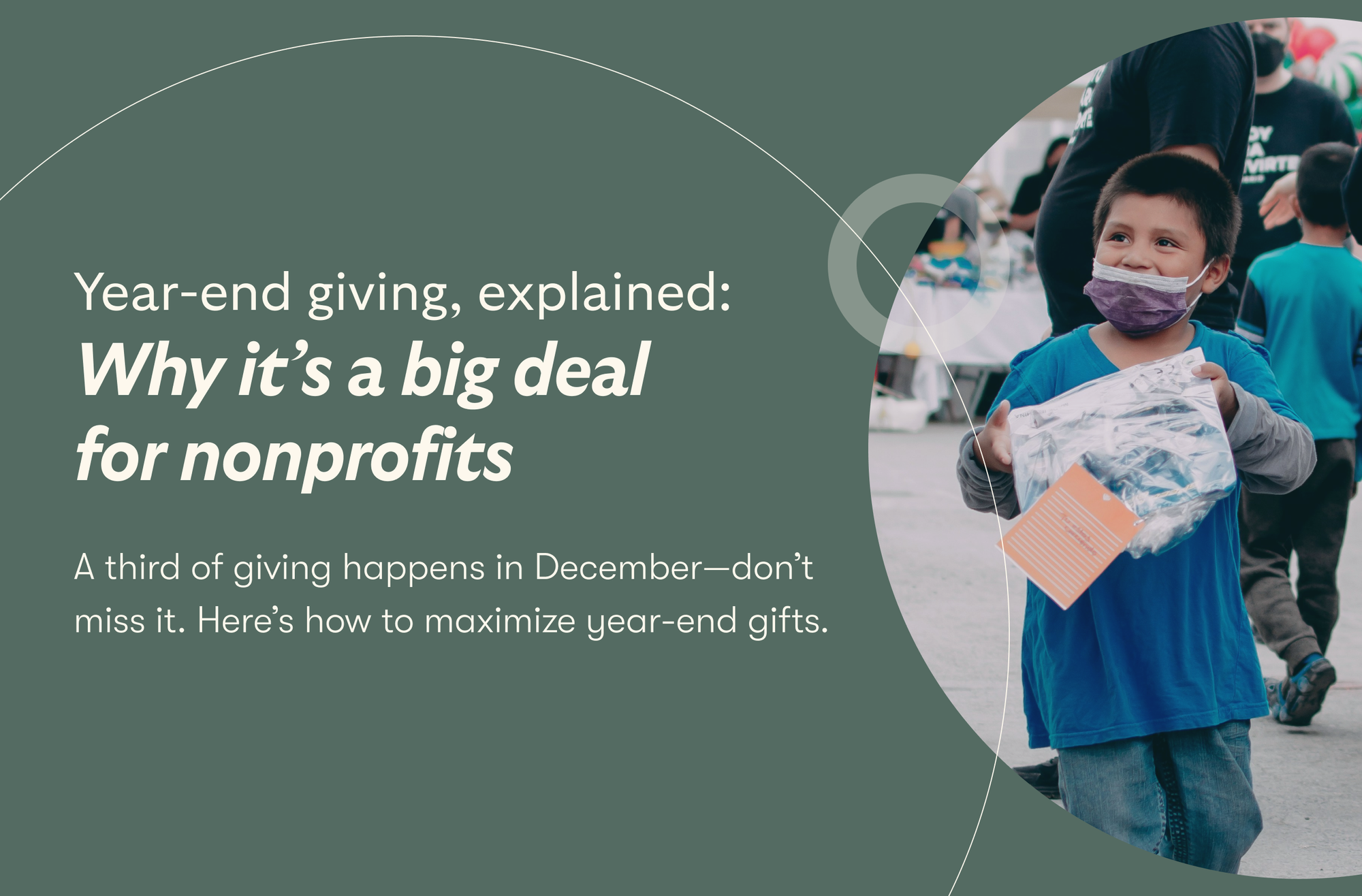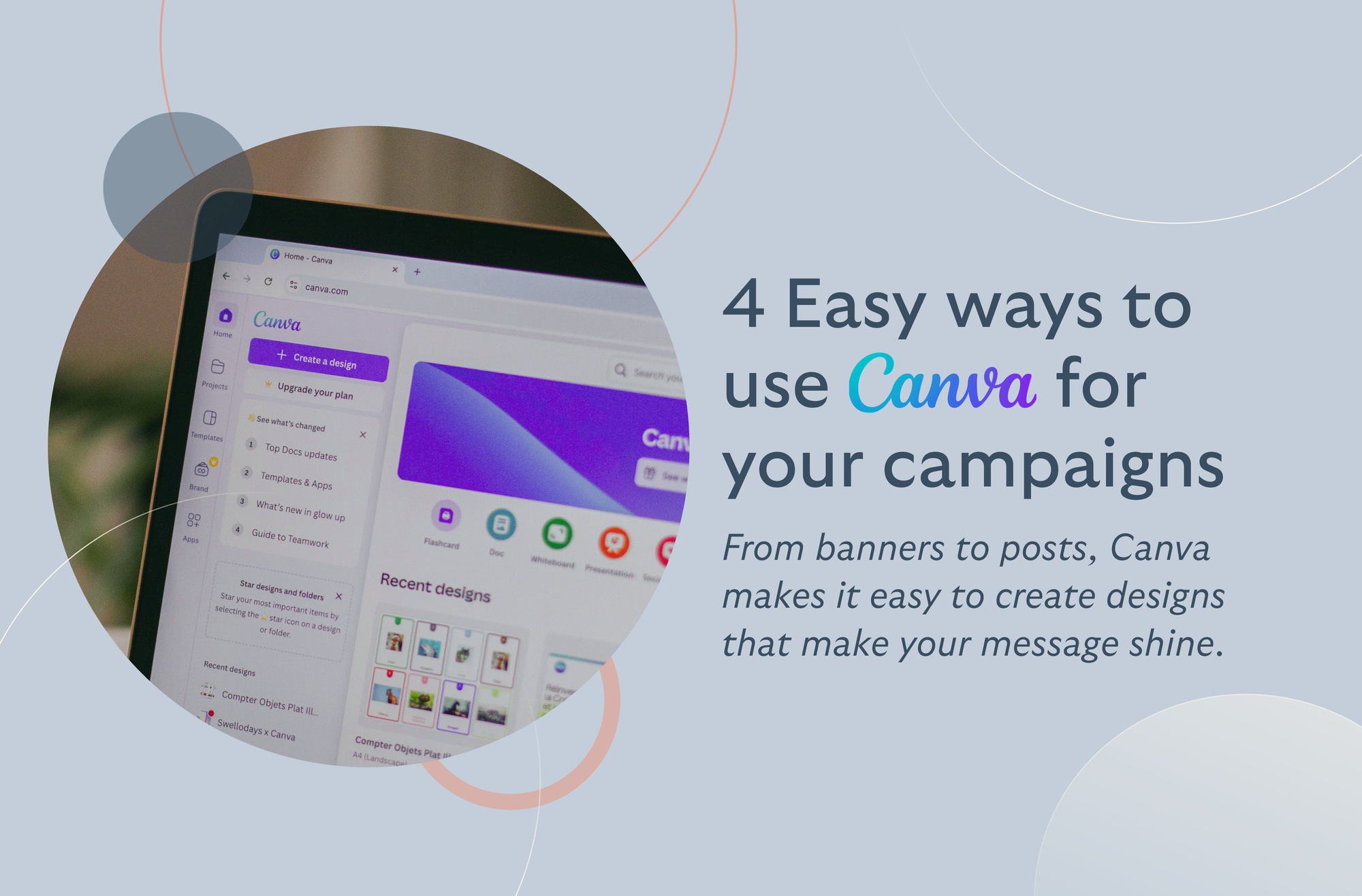Select and customize the fundraising method best suited for your organization
BetterWorld seamlessly integrates with both online and in-person auctions
Impress donors with creative raffle items and elegant online raffles
Create attractive donation pages that maximize donor impact and boost online giving
How to Get Sponsorships - Nonprofit Guide
By Colin Hunter

Sponsorships can do more than just bring in funding– they can help your nonprofit grow in meaningful ways. But here’s the thing: businesses aren’t just looking to write a check. They want real partnerships that align with their brand, values, and audience. If you can clearly show how supporting your nonprofit benefits them– whether it’s community exposure, access to new audiences, or an opportunity to reinforce their values– they’re much more likely to say yes.
With the right approach, a strong sponsorship with the right approach can make all the difference. Let’s go over how to get a sponsor in a way that truly works for both sides.
What Is a Nonprofit Sponsorship?
A nonprofit sponsorship is a partnership between a business and a nonprofit, where both parties benefit. Typically, the nonprofit receives financial support, services, or products, and the sponsor gains brand visibility, community goodwill, or a marketing boost.
It’s different from a traditional donation. Instead of a one-time gift with no strings attached, a sponsorship usually includes something in return—like logo placement, social media mentions, or recognition at an event. It’s a two-way street.
For many businesses, sponsoring a nonprofit is a way to connect with the community and support a good cause. For nonprofits, it’s an opportunity to build lasting relationships and tap into new networks. Knowing how to get sponsors for a fundraising event can make all the difference in turning casual interest into a long-term, mutually beneficial partnership.
Types of Nonprofit Sponsorships
Sponsorships can take different forms depending on what a business is willing to offer and what a nonprofit needs. Here are the most common types:
- Financial Sponsorships – A business provides direct funding to a nonprofit in exchange for exposure or recognition. This is common for fundraising events, where sponsors contribute a set amount and get their name displayed on event materials.
- In-Kind Sponsorships – Instead of money, businesses donate products or services. This could be anything from catering for a fundraiser to donated office supplies or professional services like graphic design or legal assistance.
- Media Sponsorships – A media company provides advertising, social media promotion, or press coverage for a nonprofit event or campaign. This helps increase awareness and attract more supporters.
- Promotional Partnerships – A business uses its brand or customer base to help promote a nonprofit. This might include adding a donation option at checkout, featuring the nonprofit in email marketing, or hosting a collaborative event.
Why Businesses and Organizations Choose to Sponsor Nonprofits
Businesses don’t just sponsor nonprofits out of generosity—they do it because it benefits them, too. Here are a few reasons why they get involved:
- Brand Visibility – Sponsoring a nonprofit event or campaign puts a company’s name in front of a new audience, boosting awareness and recognition.
- Community Engagement – Businesses want to be seen as active members of their community. Supporting a local nonprofit shows they care about causes that matter to their customers.
- Tax Benefits – Some sponsorships may qualify as a tax-deductible expense, which makes them a smart financial move for companies.
- Employee Involvement – Sponsoring a nonprofit can be a great way for companies to engage their employees, whether through volunteer opportunities or team-building events.
- Corporate Social Responsibility (CSR) – Many companies have CSR programs that focus on giving back. Partnering with a nonprofit helps them fulfill these commitments while making a meaningful impact.
Sponsorship Examples
Here are 3 real-life examples showing how both parties have benefited from collaborations:
1. Capuchin Soup Kitchen and Detroit Automotive Companies
The Capuchin Soup Kitchen in Detroit partnered with major automotive companies like General Motors, Chrysler Group, and Ford Motor Company.
- Nonprofit Benefits: Received significant monetary contributions, enabling the provision of food, career training, and essential services to Detroit residents in need.
- Company Benefits: Enhanced corporate social responsibility profiles and encouraged employee volunteerism, fostering community engagement.
2. Urban Harvest and Whole Foods
Urban Harvest, a nonprofit focused on sustainable food systems, collaborated with Whole Foods.
- Nonprofit Benefits: Gained financial support and resources to expand urban gardening initiatives and educational programs.
- Company Benefits: Aligned with Whole Foods' commitment to sustainability, enhancing brand image among eco-conscious consumers.
3. Atlanta Global Research & Education Collaborative (AGREC) and Delta Air Lines
AGREC partnered with Delta Air Lines to support educational initiatives.
- Nonprofit Benefits: Received a $51,000 award to help over 300 students obtain passports during the 2023-2024 academic year, promoting global learning.
- Company Benefits: Demonstrated Delta's commitment to education and community development, strengthening its corporate reputation.
How To Get a Sponsor For Your Nonprofit?
Here’s how to find the right sponsorship and secure one.
Try BetterWorld’s robust suite of charity & nonprofit fundraising tools for FREE!
1. Prepare Your Nonprofit for Sponsorships
Before reaching out to potential sponsors, take the time to prepare. This will increase your chances of landing the right sponsorship. Businesses want to partner with organizations with a clear mission, a defined audience, and something valuable to offer in return.
If you're wondering how to get sponsors for a fundraiser, it all starts with laying a strong foundation.
Clarify Your Mission and Goals
Sponsors want to support organizations that align with their values. A clear mission statement helps them understand what your nonprofit stands for and why it matters.
Define your goals as well. Are you raising funds for a specific program, hosting an event, or expanding services? Being specific makes it easier for sponsors to see how their support will make an impact.
Identify Your Target Audience
Sponsors care about who they will reach through a partnership. Show them where your audience overlaps with theirs.
For example, if your nonprofit serves families, local businesses that cater to parents might be interested. If you’re focused on environmental causes, companies with sustainability goals might be a good match. Understanding your audience helps you approach the right sponsors.
Develop a Clear Value Proposition
Sponsorships are a two way street. Come to the table with ideas for what sponsor receives in return. This could be brand exposure, community goodwill, or direct engagement with their target customers. Highlight opportunities like logo placement, social media mentions, or speaking spots at events.
Businesses need a reason to say yes, so make sure they see the value in partnering with your nonprofit.
2. How to Find the Right Sponsors for Your Nonprofit
Finding the right sponsors isn’t about casting the widest net—it’s about building relationships with businesses that genuinely align with your mission. When there's a strong fit, you're more likely to secure meaningful, long-term support.
Identify Businesses That Share Your Mission
Companies are far more likely to sponsor your nonprofit if your cause connects with their brand value or target audience.
For example, a local grocery store might be interested in sponsoring a food bank, while a tech company could support STEM education programs. Focus on businesses that serve the same community or have similar goals.
Research Companies with Shared History of Giving
Look at nonprofits with similar missions and see which businesses have supported them. Many organizations publicly thank their sponsors– on websites, event signage, or social media–making it easy to identify potential leads. If a company has backed a similar cause, there’s a good chance they’ll be open to supporting yours as well.
Using Online Tools to Find Potential Sponsors
The internet makes it easier to research and connect with potential sponsors. LinkedIn is a great resource for finding a company’s leaders and decision-makers. Corporate websites often highlight community initiatives or sponsorship programs. Local business directories can help you find companies already active in supporting local causes.
3. How to Approach Potential Sponsors
Build a connection first, and then ask for support. Businesses are more likely to say yes when they see value in the partnership.
If you’re wondering how to ask for fundraising sponsorship, focus on relationships, clear communication, and the right outreach methods.
Build Relationships First
Before making a formal request, take time to connect with potential sponsors. A cold pitch is less effective than a warm introduction. Try these approaches:
- Attend local business networking events to meet decision-makers.
- Engage with potential sponsors on social media by liking, commenting, or sharing their posts.
- Support their business by attending their events or using their services.
- Ask a mutual connection to introduce you to the right person.
Use the Right Outreach Methods
There are multiple ways to connect with potential sponsors. The best approach depends on the business and your existing relationship.
- Email – Send a personalized message that includes your sponsorship request and a follow-up plan.
- Networking Events – Attend business mixers, chamber of commerce meetings, or industry events.
- Social Media – Engage with companies on LinkedIn, Facebook, or Instagram before sending a direct message.
- Community Connections – Ask board members, donors, or volunteers if they have contacts at potential sponsor companies.
4. Create a Winning Sponsorship Proposal
Your sponsorship proposal should clearly explain your nonprofit’s mission, who it serves, and what sponsors will gain in return. Remember, a well-structured proposal can make all the difference.
What to Include in a Sponsorship Proposal
Your proposal should be short, clear, and focused on the value of the partnership. Here’s what to include:
- What your nonprofit does – A short, clear explanation of your mission.
- Why their support matters – Show how their sponsorship makes an impact.
- What’s in it for them – Highlight the benefits of visibility, marketing, or community engagement.
- Flexible sponsorship options – Offer different levels or customized opportunities.
To help you out, here is a guide on How To Write a Sponsorship Letter (+ Templates)
Structuring Sponsorship Levels
Offer different sponsorship levels to give businesses flexible options. The most common approach is:
- Gold – Premium exposure, including a featured logo on event materials, speaking opportunities, and social media promotion.
- Silver – Mid-level exposure, such as a logo on event banners, a website mention, and an event booth.
- Bronze – Basic recognition, including a social media shoutout and a name listing in event materials.
You can customize these levels based on your nonprofit’s needs and what you can offer sponsors.
Sample Sponsorship Package Ideas
Every nonprofit is different, so your sponsorship packages should match your goals. Here are some ideas:
- Event Sponsorship – Businesses sponsor a fundraiser or gala in exchange for branding opportunities.
- Program Sponsorship – A company funds a specific program or initiative, with recognition on your website and marketing materials.
- Annual Sponsorship – Long-term support with year-round promotion and exclusive benefits.
5. Make the Ask: Timing and Strategy
Many businesses and foundations plan their budgets months in advance, so reaching out when they have funds available increases your chances of getting a yes.
When to Approach Sponsors
To increase your chances of success, keep these timing tips in mind:
- Corporate budgets – Most companies finalize their annual budgets in the last quarter of the year. Early fall is a good time to start discussions.
- Start of a New Fiscal Year – Some businesses set new sponsorship budgets at the beginning of their fiscal year, which may be different from the calendar year.
- Before Big Events – If you’re hosting a fundraiser, reach out early so sponsors have time to plan their involvement.
- Grant cycles – If you’re approaching foundations, research their grant deadlines and apply accordingly.
- Giving Trends – Many companies increase charitable giving around the holidays or major community events.
Reaching out too late can mean missed opportunities, so plan ahead.
Following Up Without Being Pushy
Not every sponsor will respond right away, but that doesn’t mean they’re not interested. A thoughtful follow-up keeps the conversation going without overwhelming them.
- Give It Time – Wait at least a week before sending a reminder.
- Be Professional – Keep follow-ups short, polite, and to the point.
- Offer More Information – If they seem hesitant, provide additional details on sponsorship benefits.
- Know When to Move On – If they decline, thank them and ask if you can reach out for future opportunities.
6. Maintain Long-Term Sponsor Relationships
Figuring out how to get a sponsor is only the beginning– keeping them is where the real value lies. Long-term sponsor relationships can lead to ongoing support, bigger commitments, and deeper collaboration over time. Sponsors want to know that their contribution made an impact, and it’s up to you to show them that they did.
Keep the Communication Going
Consistent, thoughtful communication makes sponsors feel valued and connected to your mission–not just when you need something.
- Send regular updates – A short email or newsletter sharing recent milestones keeps them in the loop.
- Acknowledge their support – Feature sponsors in social media posts, newsletters, and annual reports.
- Check in personally – A quick call or handwritten note can strengthen the relationship.
Show Their Impact
Sponsors want to see the results of their support. When you show them the tangible difference they’ve made, they’re more likely to stay invested.
- Impact reports – Provide a simple breakdown of how their sponsorship helped your nonprofit.
- Testimonials – Share stories from people who benefited, whether it’s a student who got a scholarship or a community project that came to life.
- Photos and videos – Visuals make the impact more personal and engaging.
Get Sponsors Involved
Inviting sponsors in your events helps them feel like part of the team and more invested in your nonprofit’s success. Whether it’s a fundraiser, volunteer day, or networking event, giving them a role strengthens their connection to your cause.
- Host sponsor appreciation events – A small gathering to thank them goes a long way.
- Offer speaking opportunities – Let sponsors share why they support your nonprofit.
- Create hands-on experiences – Invite them to volunteer or visit a program they’ve helped fund.
7. Measure Sponsorship Success
Securing a sponsor is a win–but tracking the success of that partnership is what helps you grow and sustain it.
Measuring outcomes not only shows sponsors the value of their support, but it also gives you the insight needed to improve your approach for future sponsorships. When figuring out how to get sponsors for a fundraiser, having solid data to back up your requests can make all the difference.
Track Key Metrics
Sponsors want to see results. Keep track of engagement, visibility, and impact to ensure you can provide them with meaningful insights.
- Event attendance – How many people attended the fundraiser or saw the sponsor’s branding?
- Social media reach – Track likes, shares, and comments on posts mentioning the sponsor.
- Website traffic – Measure how many visitors came to your website through sponsor promotions.
- Donations and sales – If the sponsorship was tied to a campaign, check how it affected fundraising totals.
Get Sponsor Feedback
Checking in with sponsors after an event or campaign keeps the relationship strong and their feedback helps you strengthen and improve future partnerships.
- Ask about their experience – What did they like? What could have been better?
- Find out if they met their goals – Did they gain exposure or engagement as expected?
- Look for long-term interest – Would they consider sponsoring again?
Adjust Strategies Based on Data
The more you learn from past sponsorships, the better you can refine your approach.
- Identify what worked – Did certain sponsorship levels get more engagement?
- Fix weak spots – If sponsors didn’t see enough value, adjust how you promote them.
- Improve communication – Keeping sponsors informed throughout the process can make a big difference.
Tracking success and making adjustments keeps sponsors happy and increases the chances of long-term support.
10 Common Mistakes to Avoid When Seeking Sponsorships
Many nonprofits miss out on opportunities because they approach sponsorships the wrong way. If you're figuring out how to ask for fundraising sponsorship, avoiding these mistakes can improve your chances of success.
1. Not Researching Potential Sponsors
Approaching sponsors without understanding their goals and values can lead to mismatched partnerships.
- Solution: Research companies to ensure their mission aligns with your event's purpose.
2. Treating Sponsors Like Donors
Sponsors seek marketing benefits, not just goodwill.
- Solution: Highlight how the sponsorship provides exposure and aligns with their business objectives.
3. Lack of Clear Value Proposition
Failing to articulate what sponsors gain can result in declined proposals.
- Solution: Clearly outline the benefits, such as brand visibility and access to your audience.
4. Poor Timing in Approaching Sponsors
Contacting sponsors outside their budget planning cycles can reduce chances of success.
- Solution: Reach out during their budgeting periods, often in the fourth quarter.
5. Generic Sponsorship Proposals
Sending the same proposal to multiple sponsors shows a lack of personalization.
- Solution: Tailor each proposal to address the specific sponsor's interests and goals.
6. Overlooking Smaller or Local Businesses
Focusing only on large corporations can mean missing out on supportive local businesses.
- Solution: Engage local businesses that connect with your community and cause.
7. Inadequate Follow-Up
Not following up can leave potential sponsors uncertain about your interest.
- Solution: Send timely follow-ups to express continued interest and provide additional information.
8. Failing to Measure and Report Impact
Without demonstrating the sponsorship's success, renewing partnerships becomes challenging.
- Solution: Provide sponsors with reports showcasing the impact and reach of their involvement.
9. Ignoring Feedback from Sponsors
Disregarding sponsor feedback can harm future collaborations.
- Solution: Actively seek and incorporate sponsor feedback to improve future events.
10. Not Building Long-Term Relationships
Viewing sponsorships as one-time transactions can limit future opportunities.
- Solution: Build ongoing relationships to encourage repeat sponsorships.
Get Started with BetterWorld and Raise More for Your Cause
Now that you know how to find a sponsor, why not choose a platform that helps you make a bigger impact? That’s right—BetterWorld offers all the fundraising tools you need in one place, and it's completely free, so you keep every dollar you raise!
BetterWorld’s Donation Forms boost contributions by 30%. They’re perfect for recurring giving, offering flexible payment options and automated management so you can focus on your cause.
Our Modern Fundraising Tools support all types of campaigns, whether it's an auction, crowdfunding, or ticketing.
Last but not least, Free Virtual Event Tools provide a real-time, perfectly synced platform for donors—no matter where they are.
Some of the key features include:
- Unlimited Everything
- No Advertising
- Secure & Encrypted
- Automated Payment & Receipts
- 100% Free- BetterWorld is supported by optional tips.
So, why wait? Join 100,000+ nonprofits, organizations, and fundraisers already using BetterWorld.
Setup takes less than 5 minutes, and our dedicated team is ready to help you from starting to executing your fundraising campaigns.
Sign up today and start raising more at zero cost!

Join 105,000+ amazing nonprofits, organizations, and fundraisers on BetterWorld

Let our FREE fundraising tools help you raise more funds with less effort








